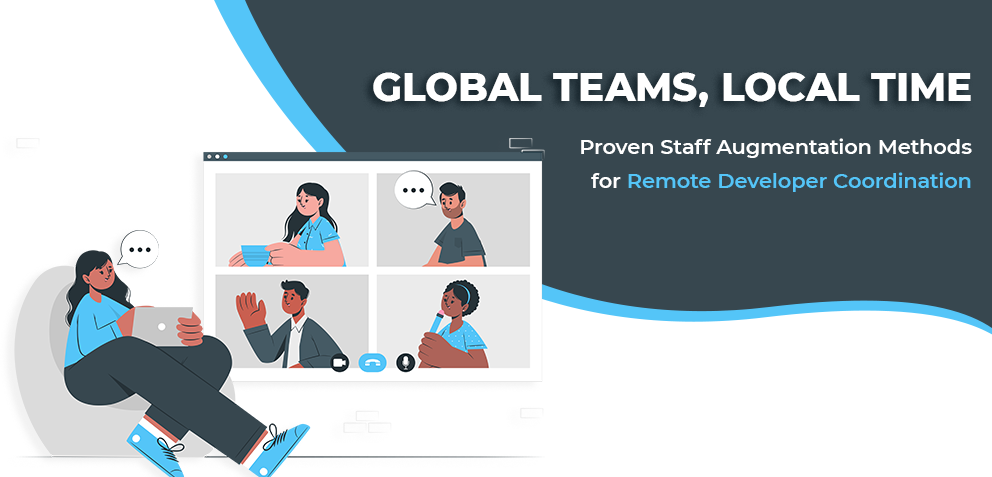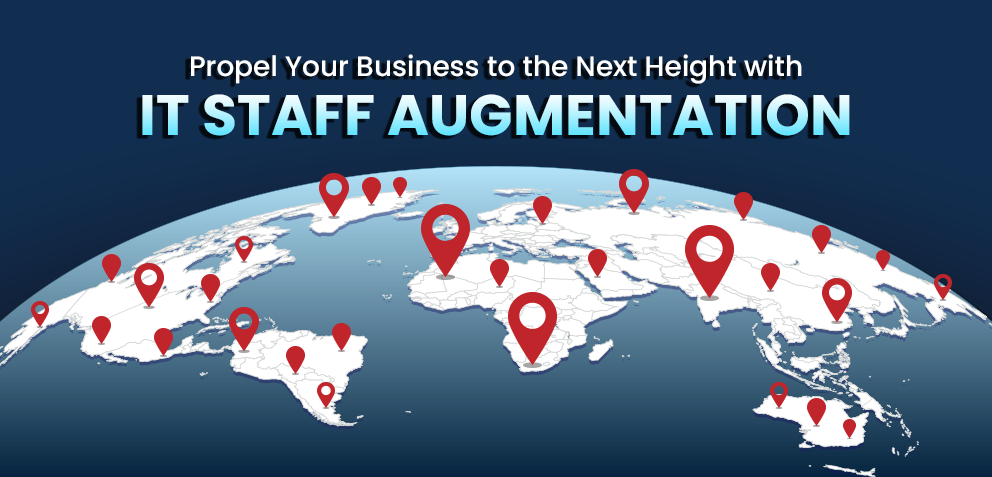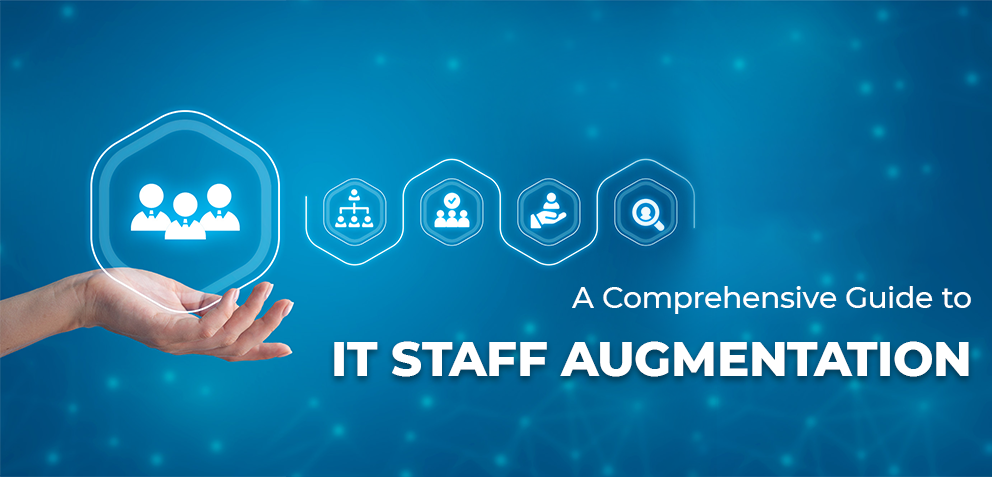Guide to Time Zone-Friendly Staff Augmentation Strategies

Tags
 Stay In-the-loop
Stay In-the-loop
Get fresh tech & marketing insights delivered right to your inbox.
Share this Article
Category
- .Net Developer
- Adtech
- Android App Development
- API
- App Store
- Artificial Intelligence
- Blockchain Development
- Chatbot Development
- CMS Development
- Cybersecurity
- Data Security
- Dedicated Developers
- Digital Marketing
- Ecommerce Development
- Edtech
- Fintech
- Flutter app development
- Full Stack Development
- Healthcare Tech
- Hybrid App Development
- iOS App Development
- IT Project Management
- JavaScript development
- Laravel Development
- Magento Development
- MEAN Stack Developer
- MERN Stack Developer
- Mobile App
- Mobile App Development
- Nodejs Development
- Progressive Web Application
- python development
- QA and testing
- Quality Engineering
- React Native
- SaaS
- SEO
- Shopify Development
- Software Development
- Software Outsourcing
- Staff Augmentation
- UI/UX Development
- Web analytics tools
- Wordpress Development
‘Many hands make light work.’ In the realm of staff augmentation, it becomes ‘Many time zones make round-the-clock progress.’
Today’s corporate deck is having various dimensions to fill in the gaps of skills and expertise while dealing with the management of a particular project. Staff augmentation is another effective coinage in this scenario where working with remote developers is also an option.
Therefore to make it effectively work, focus on efficiently distributing responsibilities to ensure a 24-hour cycle of collaboration, harvesting the best from each contributor, and yielding a bountiful harvest of success. So, here in this blog, we will amplify the essentials required, while managing a project that works in association with remote developers dwelling in different time zones.
Synchronous vs. Asynchronous Communication in Staff Augmentation
Managing remote developers across different time zones involves choosing between synchronous and asynchronous communication.
Synchronous communication enhances teamwork in staff augmentation, fostering real-time collaboration and efficient project management. Asynchronous approaches, such as email or project management tools, offer flexibility but may slow down decision-making.
Striking a balance is key, leveraging synchronous communication for crucial discussions and asynchronous tools for collaboration and updates. Regularly scheduled meetings accommodating all time zones help maintain effective communication and collaboration within a globally dispersed development team.
How to Address Work-Life Balance Among Remote Developers Considering Geographical Differences?

Communication Strategies
Establish clear communication channels, utilize asynchronous communication tools, set overlapping working hours for crucial discussions, document processes comprehensively, and prioritize concise written updates.
Foster a culture of transparency, encourage regular check-ins, and use video calls when needed. Emphasize the importance of time zone awareness and understanding.
Leverage project management tools for visibility and collaboration. Regularly reassess communication effectiveness and adjust strategies as needed.
Project Management
Coordinate with a centralized project management tool for real-time updates. Schedule regular, overlapping hours for team communication. Clearly define roles, tasks, and expectations. Leverage asynchronous communication when possible. Document processes and guidelines for clarity. Use time zone converters to plan meetings effectively. Nurture a collaborative culture through virtual team-building activities.
Regularly assess and adjust workflows to optimize efficiency. Emphasize transparent communication to mitigate misunderstandings. Encourage autonomy and flexibility to accommodate diverse schedules.
Another most important stuff that needs serious attention while you are working with remote developers is generating bills for them. And, in order to have a proper clarity and discipline within the work structure, implement a dynamic billing system that factors in hours worked by remote developers across various time zones.
Use a centralized project management tool to track individual contributions, time logs, and milestones. Ensure transparency and accuracy in billing, fostering efficient collaboration and fair compensation for all team members.
Moreover, implementing staff augmentation services streamlines project management, coordinating remote developers across diverse time zones efficiently.
Time Zone Considerations
Navigating time zone disparities when overseeing remote developers demands a delicate orchestration. Embrace asynchronous communication tools, fostering a collaborative environment that respects diverse working hours.
Establish clear guidelines for overlapping periods, ensuring crucial discussions occur when most team members are available. Encourage flexibility in deadlines, recognizing the challenges imposed by varying time zones. Leverage project management tools to track progress seamlessly.
Ultimately, cultivate a culture of understanding and adaptability, acknowledging the uniqueness each time zone brings to the collaborative tapestry.
Cultural Awareness
When managing remote developers across diverse time zones, cultural awareness is paramount for effective collaboration when utilizing offshore staff augmentation services globally. Recognize and respect varying work styles, communication preferences, and holidays. Foster an inclusive environment by accommodating flexible schedules when possible.

Facilitate clear communication channels, acknowledging potential language barriers. Emphasize a global team mindset to leverage diverse perspectives. Regular virtual check-ins and team-building activities help strengthen connections. Cultivating cultural sensitivity enhances collaboration and promotes a positive remote work experience for everyone involved.
Performance Tracking
To track remote developers’ performance across geographical differences, use collaborative project management tools like Jira or Trello. Implement regular video meetings to discuss progress and address challenges. Utilize version control systems like Git for code collaboration.
Set clear goals and deadlines, and use communication channels such as Slack for real-time updates. Implement key performance indicators (KPIs) to assess productivity and quality. Cultivate a transparent and inclusive culture to enhance collaboration. Regularly gather feedback and adapt your approach to optimize remote team performance.
Documentation and Knowledge Sharing
Effective documentation and knowledge sharing are crucial when collaborating with remote developers across diverse locations. Utilize collaborative platforms like Confluence or GitHub Wiki to centralize documentation. Conduct regular virtual knowledge-sharing sessions, leveraging video calls and screen-sharing.
Encourage an open communication culture and use tools like Slack or Microsoft Teams for real-time discussions. Promote a sense of shared responsibility for documentation updates, ensuring that all team members contribute and stay informed despite geographical differences. For more effective outcomes, enhance documentation and knowledge sharing for remote teams with IT staff augmentation services.
Security and Data Protection
To enhance security with remote developers—
- Encryption: Ensure data is encrypted during transmission and storage.
- Access Control: Implement strict access controls, limiting permissions based on job requirements.
- VPN Usage: Encourage the use of Virtual Private Networks (VPNs) for secure connections.
- Regular Audits: Conduct frequent security audits to identify and address vulnerabilities.
- Training: Train remote developers on security best practices to support a culture of awareness.
- Secure Communication: Use secure communication channels for sensitive information.
- Update Software: Keep all software and systems updated to patch known vulnerabilities.
- Multi–Factor Authentication: Enforce multi-factor authentication for an added layer of security.
Employee Well-being
In a work culture, it is very important that an employee enjoys a mental state of happiness that even results in the overall optimization of productivity of the business organization. According to records, it has been found that 69% of employees have reported lower stress levels, whereas, 80% have reported with better morale.
Ensure clear communication channels, set realistic deadlines accommodating various time zones, and promote flexible work hours. Emphasize having a supportive team culture through regular check-ins and virtual team-building activities. Provide resources for mental health and encourage breaks.
Establish clear expectations for work-life balance and emphasize the importance of taking time off. Implement tools for seamless collaboration and offer training on remote work best practices. Regularly solicit feedback to adapt strategies based on the evolving needs of your remote developers.
Professional Development
Leveraging staff augmentation providers enhances professional development for remote teams across diverse time zones. Navigating the temporal tapestry of remote development demands a symphony of strategies. First, establish a robust communication protocol, harmonizing regular synchronous meetings and asynchronous updates. Cultivate a virtual culture that transcends borders, fostering collaboration through shared goals.
Utilize time zone differentials by embracing a staggered work model, ensuring 24/7 productivity. Integrate versatile project management tools to synchronize tasks effortlessly.
Lastly, orchestrate periodic team-building sessions to cultivate camaraderie amidst the digital expanse. By conducting this remote symphony with finesse, you transform time zones into a seamless continuum of productivity and collaboration.
Conflict Resolution
To resolve conflicts among remote developers, encourage asynchronous communication using tools like detailed commit messages or documentation. Engaging a staff augmentation firm for seamless conflict resolution while managing remote developers in diverse time zones is also a great option. Foster empathy by organizing virtual team-building activities, such as online game tournaments or collaborative coding challenges.
Implement a unique conflict resolution approach, like “reverse pair programming,” where developers swap roles to understand each other’s perspectives. Utilize sentiment analysis in communication tools to detect potential conflicts early. Emphasize a shared goal, such as creating a team playlist where members contribute songs that represent their collaborative spirit.
Final Thoughts
In wrapping up collaboration with remote developers across various time zones, emphasize effective communication channels, establishing clear expectations, and fostering a culture of flexibility. Highlight the significance of tools like Slack and project management software in maintaining seamless coordination.
Acknowledge the diverse perspectives that come with a globally distributed team and stress the importance of periodic check-ins to address any potential issues promptly. Ultimately, celebrate the collective achievements despite geographical differences, showcasing the team’s ability to overcome challenges and deliver exceptional results.
Incorporating the essence of staff augmentation has proved its vitality for seamless collaboration among remote developers across diverse time zones.


